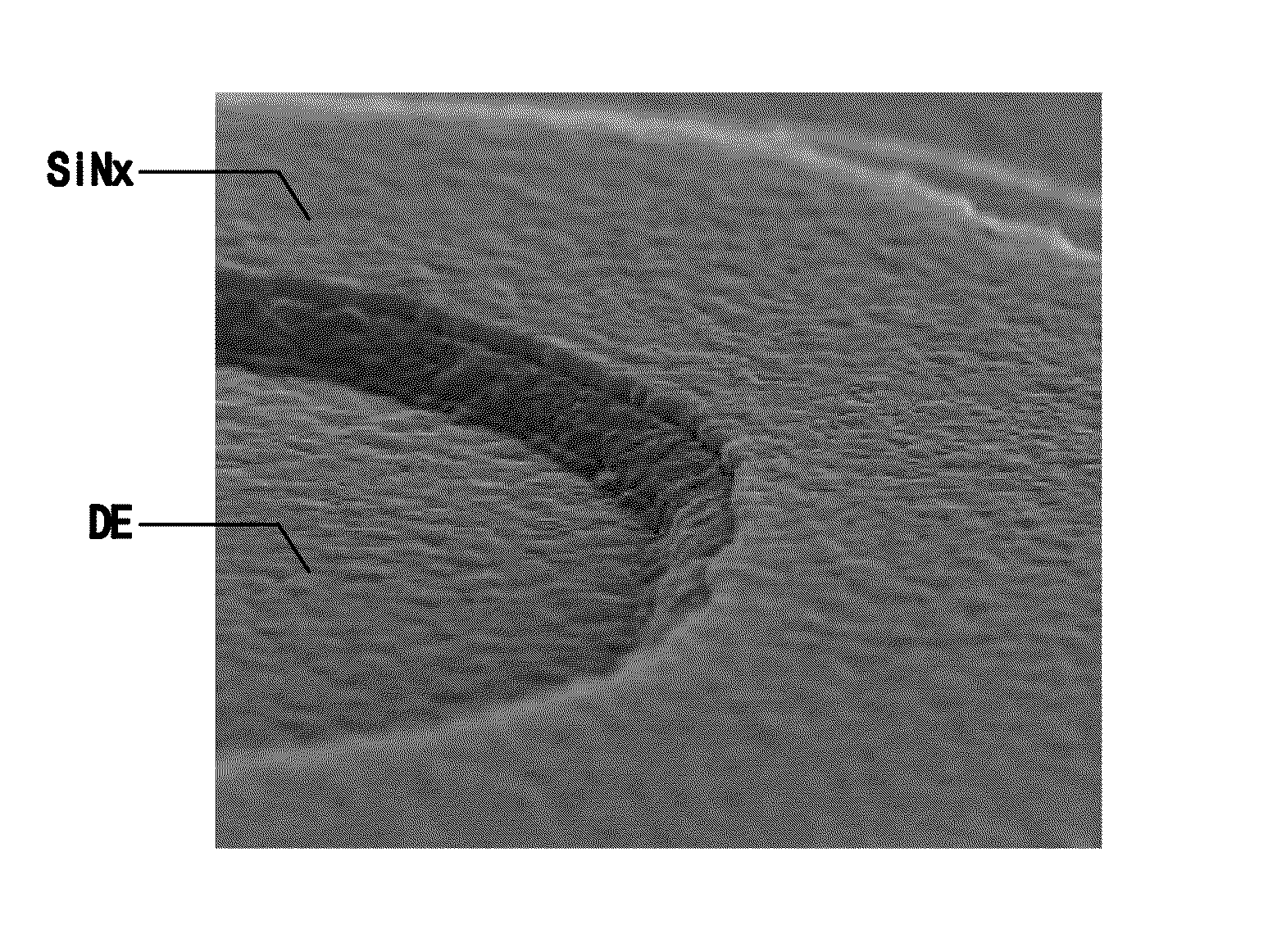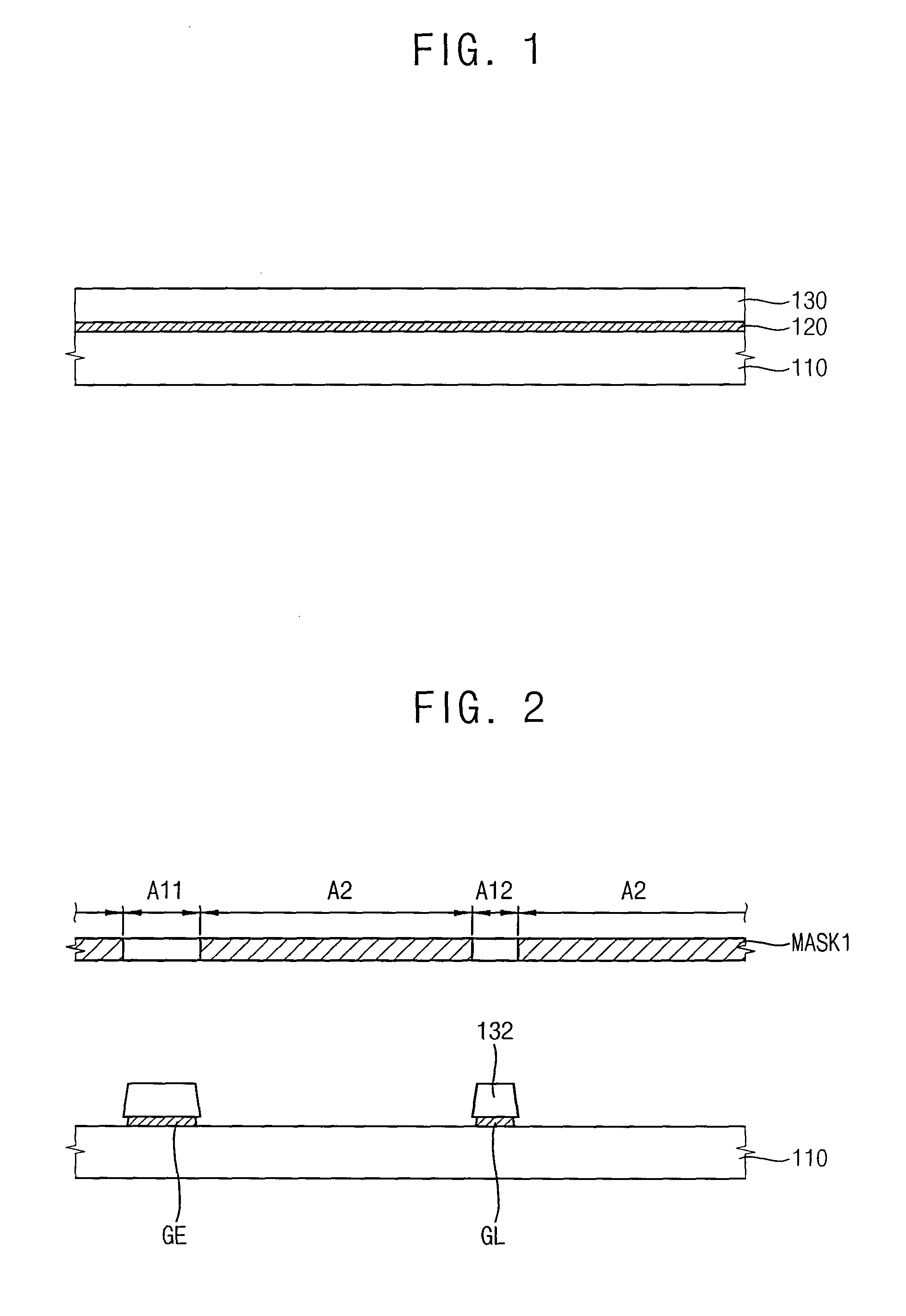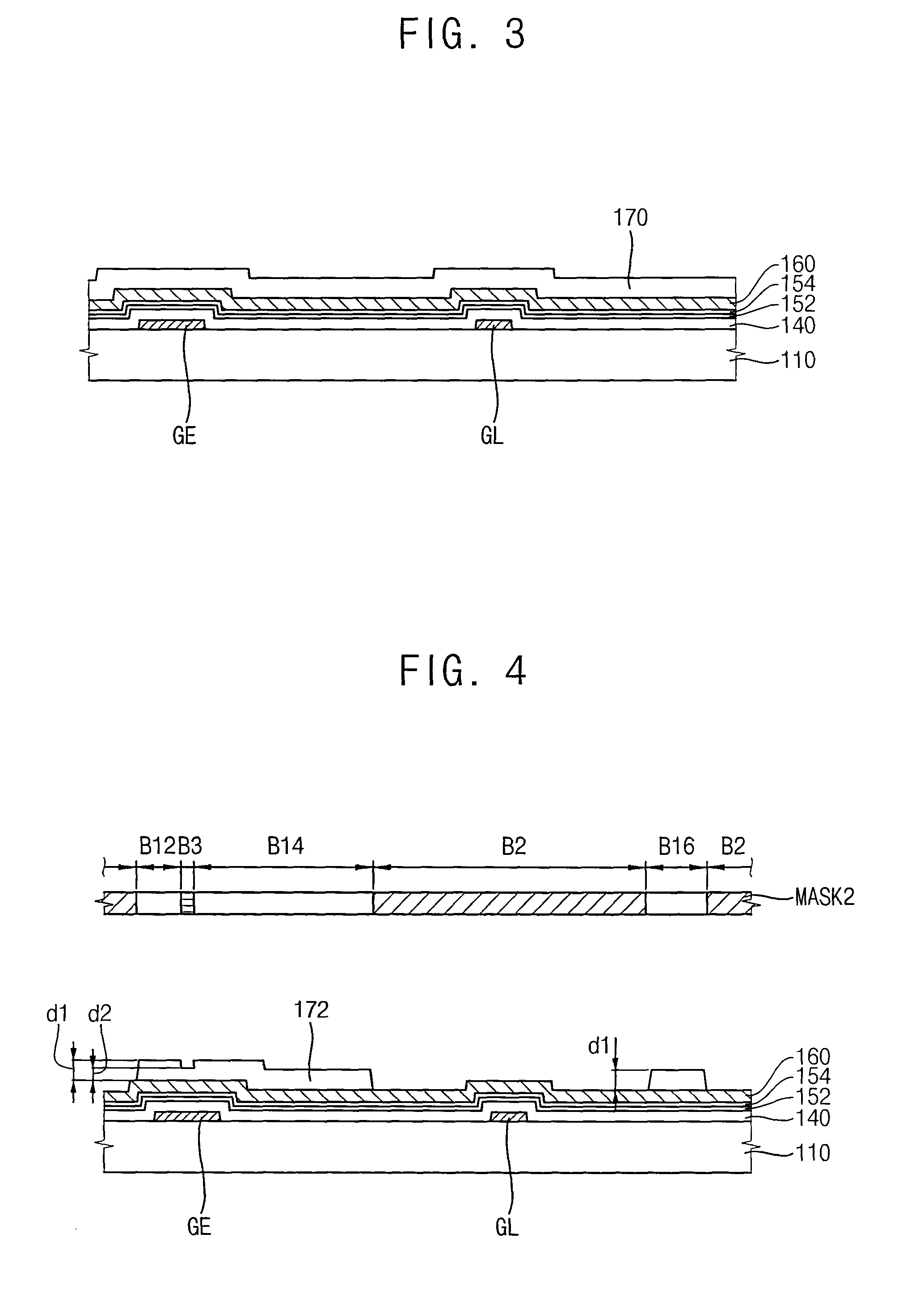Composition for removing a photoresist and method of manufacturing a thin-film transistor substrate using the composition
a thin-film transistor and composition technology, applied in the field of composition for removing a photoresist and a thin-film transistor substrate, can solve the problems of corroding output electrodes, difficult to uniformly form organic layers on the entire surface of tft substrates, undesirable thick organic layers, etc., to reduce the rework process of organic layers, and improve the removing ability of organic layers
- Summary
- Abstract
- Description
- Claims
- Application Information
AI Technical Summary
Benefits of technology
Problems solved by technology
Method used
Image
Examples
example 1
[0112]Based on a total weight of a composition for removing a photoresist, about 5% by weight of tetramethyl ammonium hydroxide (“TMAH”), about 59.9% by weight of dimethylene glycol monomethyl ether (“MDG”), about 5% by weight of an alkanol amine, about 0.1% by weight of tolytriazole, and about 10% by weight of deionized (“DI”) water were mixed to prepare the composition for removing the photoresist according to Example 1 of the present invention.
[0113]Compositions for removing a photoresist according to Example 2 and 3 including the foregoing components and in the amounts shown in Table 1 were prepared via substantially the same method as preparing the composition for removing the photoresist according to Example 1.
[0114]
TABLE 1ComponentExample 2Example 3TMAHabout 4.0% by weightabout 3.0 by weightMDGabout 50.9% by weightabout 51.9% by weightNMPabout 30.0% by weightabout 25.0% by weightalkanol amineabout 5.0% by weightabout 5.0% by weighttolytriazoleabout 0.1% by weightabout 0.1% by...
experiment 1
Evaluation of Removing Ability of an Organic Layer
[0121]The organic layer was removed using the composition for removing the photoresist according to Example 1 maintained in a temperature of about 50° C. in each of Substrate Sample 1 to Substrate Sample 6. The contact region removing the organic layer in each of the Substrate Sample 1 to Substrate Sample 6 was imaged using the scanning electrode microscope, and the SEMs are provided in FIGS. 9B and 10B.
[0122]For each of Substrate Samples 2 and 7, the organic layer was removed using the composition for removing the photoresist according to Example 2 maintained in a temperature of about 50° C.
[0123]For each of Substrate Sample 3 and 8, the organic layer was removed using the composition for removing the photoresist according to Example 3 maintained in a temperature of about 50° C.
[0124]For each of Substrate Sample 4 and 9, the organic layer was removed using the composition for removing the photoresist according to Comparative Example...
experiment 2
Evaluation of Corroding a Metal Layer
[0138]The composition for removing the photoresist according to Example 1 was provided to each of Metal Sample 1 and 6 for about 10 minutes. The composition for removing the photoresist according to Example 2 was provided to each of Metal Sample 2 and 7, and the composition for removing the photoresist according to Example 3 was provided to each of Metal Sample 3 and 8 for about 10 minutes.
[0139]In addition, the composition for removing the photoresist according to Comparative Example 1 was provided to each of Metal Samples 4 and 9, and the composition for removing the photoresist according to Comparative Example 2 was provided to each of Metal Samples 5 and 10 for about 10 minutes.
[0140]In each of Metal Samples 1 to 10, the corrosion of the aluminum pattern or the copper pattern was observable with the naked eye of a viewer. The obtained results are illustrated in Table 4. In Table 4, “∘” represents when the aluminum pattern or the copper patter...
PUM
 Login to View More
Login to View More Abstract
Description
Claims
Application Information
 Login to View More
Login to View More - R&D
- Intellectual Property
- Life Sciences
- Materials
- Tech Scout
- Unparalleled Data Quality
- Higher Quality Content
- 60% Fewer Hallucinations
Browse by: Latest US Patents, China's latest patents, Technical Efficacy Thesaurus, Application Domain, Technology Topic, Popular Technical Reports.
© 2025 PatSnap. All rights reserved.Legal|Privacy policy|Modern Slavery Act Transparency Statement|Sitemap|About US| Contact US: help@patsnap.com



